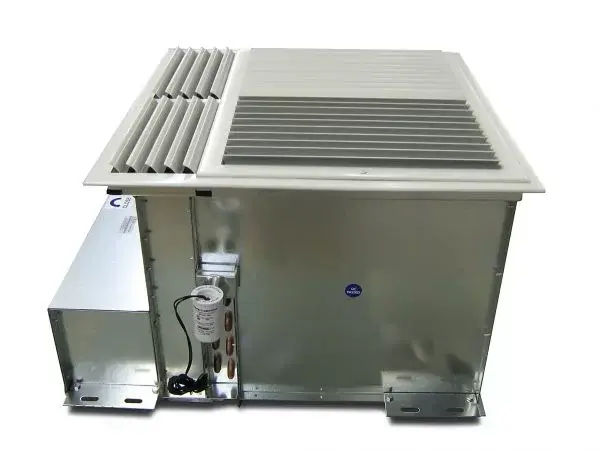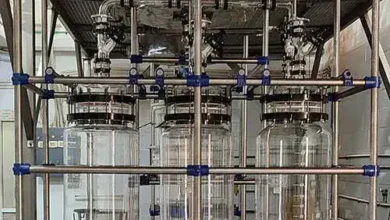Are Chilled Beams more Effective than Induction Units?

What is a chilled beam? In an HVAC system, a chilled beam is an air supply mechanism with a critical coil inaugurated to get suitable heating and cooling.
WHAT ARE CHILLED BEAMS? WHY DO YOU NEED TO GET THEM?
While you need to upgrade your air conditioning system, you might reap the benefit by replacing the old system with an induction chilled beam system. These new HVAC units function just like radiators.
Cooled liquid goes through copper tubing and ss the air circulating the tubing; heat gets moved into the coils, which leads to a calmer atmosphere. The cold air then gets replaced by warmer air, and the cycle goes on.
UNDERSTANDING INDUCTION CHILLED BEAM
A chilled beam is a building arrangement that effectively moves energy throughout a building by using convection and water.
Both types of chilled beams – active and passive, in no way are a part of a structural system of a structure, as the title might symbolize. The units are one-dimensional in shape, which can create a beam-like look to inexperienced eyes.
Chilled beams are well-known for comfortable, energy-efficient, silent, and smooth operation in a robust system with several moving parts and low maintenance.
TYPES OF CHILLED BEAMS
Active chilled beams possess ductwork that provides a particular amount of primary air to the pressurized plenum present in the machine, which is to be discharged via induction nozzles, connect with entrained air, and ultimately ventilate the room.
Active chilled beams are ideal when you need sensible heating, cooling, and ventilation. If you need additional heating or cooling or some other methods to meet the construction layout’s overall demand, passive beams are beneficial.
Public and private offices, meeting rooms, classrooms, health care centers, and other spaces that have moderate to high sensible heat ratios are all that require active chilled beams.
A passive chilled beam is not ducted. It doesn’t supply primary air, nor does it utilize a fan-powered tool for any air section that passes through the coil. It relies on induction air pulled across the coil employing natural gravitational forces and resilience of air.
Passive chilled beams are the best solution to get proper cooling in labs and other spaces where people and processes generate high heat loads. Besides, they are also ideal to have in rooms sensitive to pressure or ventilation fluctuations and need no extra airflow.
Some applications might have a relatively high latent load that an HVAC system can be somewhat more suitable for use than active chilled beams. But, for additional cooling, passive beams could be more beneficial.
Areas needing additional cooling, and keeping ventilation systems in place are also suitable for passive beam applications.
BENEFITS AND DRAWBACKS OF CHILLED BEAMS
Chilled beam systems provide several benefits and drawbacks, including:
BENEFITS
Chilled beams don’t have a terminal unit fan. However, their total system fan energy is comparatively lower than other systems that require terminal equipment fans.
Chilled beams do not have condensate filters. Nevertheless, the overall system support needs are comparatively lower than those systems with terminal equipment filters.
Central air systems require exterior ventilation, so the system requires minimal air-side infrastructure. Central air handling tools and vertical duct risers require limited floor space as a result.
Since there isn’t any terminal equipment fan noise, a chilled beam functions quietly.
DRAWBACKS
The entering chilled water temperature needs to be a particular degree over the space dew point. Generally, the waterside delta T is relatively lower than a fan coil unit. The chilled beam system comparatively enhances the pumping energy.
During chilly days, the building needs a dedicated exterior air unit to control humidity. The chilled beam needs to perform this. The air unit should endlessly provide low dew point ventilation to the rooms to keep efficient humid levels and avoid condensation at the chilled beams. Any condensation is visible by the occupants and can permanently spoil adjacent building finishes.
During the cooling days throughout unoccupied building hours, we need to control humidity to prevent condensation at the beams over morning start-up.
Each room requires an individual chilled beam. One system cannot serve multiple spaces.
In a heating-dominated climate, people often use separate heating systems. The chilled beams employ the decreased density of cold air to stimulate flow. However, they are less effective at delivering heat to a room.
ULTIMATELY
When it comes to energy efficiency, active chilled beams and induction units are more productive but are not as effective as passive beams and are moreover measured by better VAV systems.




